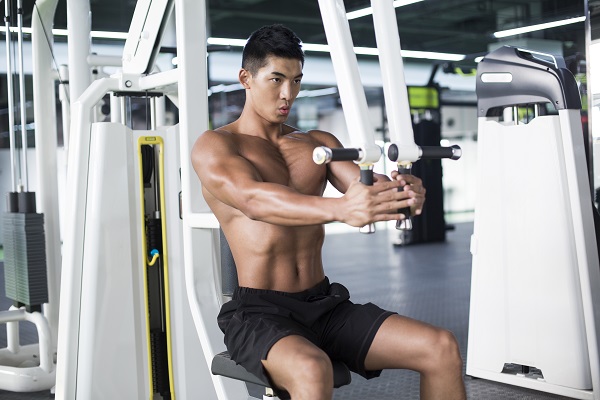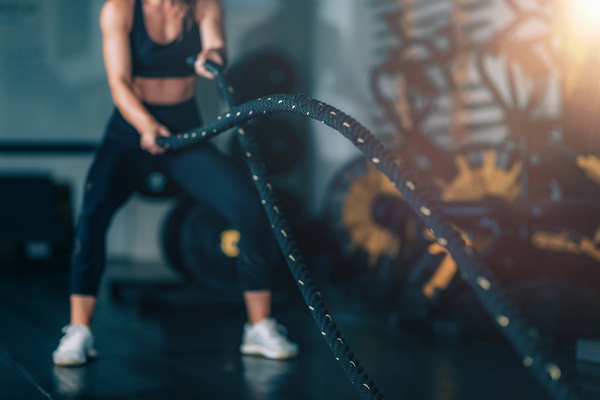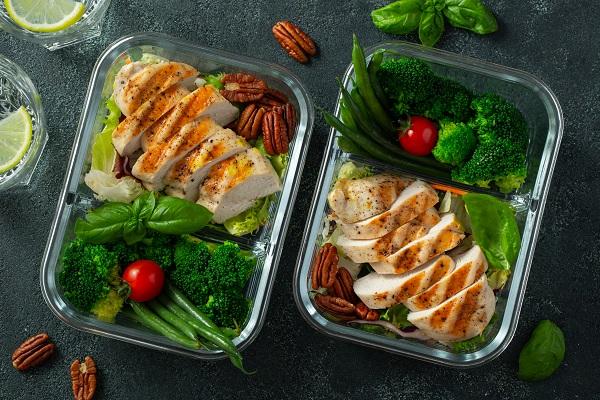Increasing the effectiveness of your gym workouts is not just about spending more time lifting weights or running on the treadmill. Instead, it’s a combination of various elements such as proper hydration, warm-up routines, and strength training that can significantly optimize the benefits you reap from each session. This blog post will provide practical, easy-to-implement strategies to ensure that every minute spent in the gym counts towards achieving your fitness goals. From hydration tips to exercise techniques, let’s delve into how you can maximize your gym workouts to become stronger, better, and faster.0
Contents
Warm Up And Cool Down
Warming up before any workout is essential to prepare your body for the impending physical stress. A good warm-up gradually increases heart rate, improves circulation, and prepares the muscles and joints for the range of movements they’ll be doing during the workout. This not only enhances performance but also minimizes the risk of injury. The routine can be as simple as brisk walking, light jogging, or performing movements similar to the main workout at a lower intensity.
On the other end, cooling down after a workout helps to slowly bring the heart rate back to its resting level and reduce post-workout stiffness and soreness. Techniques such as gentle stretching and slow, controlled movements aid in removing waste products accumulated in the muscles during the workout, promoting faster recovery. By incorporating warm-up and cool-down routines, you are less likely to experience injuries and more likely to see consistent progress in your workouts.
Prioritize Strength Training
Incorporating strength training into your fitness regimen offers numerous benefits, including increased muscle mass, improved bone health, and boosted metabolism. Lifting weights or performing body-weight exercises creates microscopic tears in the muscle tissues, which heal and grow stronger during rest periods. This not only results in a toned physique but also enhances overall strength and endurance, making daily tasks easier to perform.
An effective strength training program should target all major muscle groups and vary in intensity and volume. Beginners might start with light weights or bodyweight exercises, gradually increasing the resistance as their strength improves. It’s beneficial to seek guidance from a fitness professional to ensure exercises are performed with proper form, reducing the risk of injury and maximizing the benefits of the workout.
Drink Plenty Of Water
Adequate hydration plays a vital role in overall physical performance. Every cell, tissue, and organ in the body requires water to function properly. When it comes to workouts, hydration affects energy levels and overall endurance, making it easier to perform exercises efficiently. Proper hydration also helps to prevent muscle cramps and fatigue, which can negatively impact workout performance and recovery time. To stay optimally hydrated, aim to drink water before, during, and after your workouts. The amount may vary depending on individual needs, so it’s beneficial to pay attention to your body’s signals of thirst and consider factors such as sweat rate and workout intensity.
Include High-Intensity Interval Training (HIIT)
High-Intensity Interval Training, commonly known as HIIT, involves short bursts of intense exercise alternated with periods of rest or lower-intensity exercise. This type of training is effective for enhancing cardiovascular health, increasing metabolic rate, and promoting fat burn. The beauty of HIIT is that it allows for a significant amount of work to be done in a short period, making it a time-efficient choice for those with a busy schedule.
While HIIT can be challenging, the intensity and duration of the exercise and rest periods can be adjusted to suit individual fitness levels. Examples of HIIT workouts include sprint intervals, burpee intervals, or circuit training with minimal rest between exercises. By incorporating HIIT into your workout regimen, you can increase your endurance and burn more calories, even after the workout has ended.
Don’t Neglect Flexibility And Balance
Flexibility and balance are often overlooked aspects of fitness, but they play a crucial role in overall physical health and performance. Improved flexibility aids in maintaining a full range of motion in the joints, reducing the risk of injuries and enhancing performance in other activities. Balance training, on the other hand, improves stability, enhances body awareness, and can prevent falls and related injuries.
Incorporating flexibility exercises such as stretching or yoga into your fitness routine can help improve your mobility and make your workouts more effective. Balance can be improved by exercises that challenge stability, such as single-leg stands or exercises on an unstable surface like a BOSU ball. These activities are not only beneficial for overall fitness but can also improve posture, coordination, and functional movement in daily life.
Optimize Nutrition
What you eat before and after a workout can significantly impact your performance and recovery. Before hitting the gym, it’s advisable to consume a balanced meal or snack that includes complex carbohydrates and protein. The former provides sustained energy for the workout, while the latter aids in muscle repair and growth. Avoid consuming too much fat or fiber pre-workout, as these can slow digestion and lead to discomfort during exercise.
After a workout, refueling the body with a mix of protein and carbohydrates can enhance recovery. Protein helps repair and build muscle tissue, while carbohydrates replenish the muscle glycogen stores depleted during exercise. Eating within 45 minutes to an hour post-workout can maximize these recovery benefits. Remember, each individual’s nutritional needs can vary, so it’s important to listen to your body and possibly seek advice from a registered dietitian.
Get Enough Rest
Rest and recovery are integral parts of any fitness routine. During rest periods, the body repairs muscle tissues, strengthens the cardiovascular system, and replenishes energy stores, preparing you for your next workout. Without adequate rest, the risk of overuse injuries increases, and performance can suffer. Aim for at least one full rest day per week and ensure you’re getting enough quality sleep each night.
Active recovery days, where light activities like walking or gentle yoga are performed, can also aid in recovery without putting excessive strain on the body. Furthermore, employing techniques such as foam rolling or massage can help relieve muscle tension and improve flexibility, enhancing the overall recovery process. Remember, fitness is a journey, not a race, and giving your body the time it needs to rest and repair is just as important as the workouts themselves.
The Bottom Line
Achieving fitness goals isn’t solely about how much time you spend in the gym. It’s also about incorporating strategies such as proper hydration, warm-ups, strength training, HIIT workouts, flexibility and balance exercises, optimal nutrition, and adequate rest into your routine. By implementing these strategies, you can maximize the benefits of your gym workouts, making you stronger, better, and faster. Always remember that fitness is a journey, and every step you take towards adopting these practices brings you one step closer to your goals.









